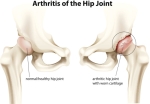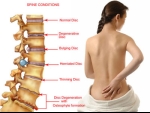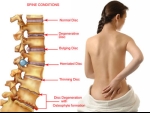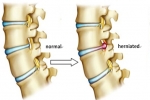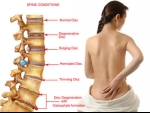Home » Blog
| Stem Cell, PRP, Acupuncture in Queens & Long Island, New York
Blog | Stem Cell, PRP, Acupuncture in Queens & Long Island, New York
In the medical field, stenosis means the abnormal narrowing of a body channel. When combined with the word spinal, it defines a narrowing of the bone channel occupied by the spinal nerves or the spinal cord. Some people are born with a congenital form, but most develop spinal stenosis as part of the degenerative cascade. A few do not feel any effects of the narrowing, but as part of the aging process, most people will eventually notice radiating pain, weakness, and/or numbness secondary to the compression of the nerves or spinal cord.
Read more
Hip osteoarthritis (OA) causes the cartilage that cushions your joints to be lost, resulting in pain and stiffness. Your doctor will be able to provide recommendations based on your condition. The treatments range from conservative to invasive. Conservative treatments include exercising and stretching. Invasive treatments include hip replacement surgery. All these treatments can help manage pain and improve mobility.
Read more
People showing symptoms of a lumbar herniated disc can expect the doctor to conduct a detailed interview and perform a thorough physical exam. Questions about when and how the pain started are typical, particularly if there was any type of traumatic injury.
Read more
Compared to other medical conditions, there are relatively few standardized approaches to diagnosis and treatment of back problems. Spine specialists from various areas of expertise (such as physical medicine and rehabilitation, chiropractic, osteopathic medicine, physical therapy, and surgery) will often disagree on the diagnosis and most appropriate treatment plan for back pain and back problems, and specialists within a discipline will also frequently have different opinions. A few diagnoses for back pain as a result of back a back problem are relatively straightforward (such as a spinal tumor, infection, or fracture) and there is generally more consensus for diagnosis and treatment of these back problems.
Read more
Arthritis is a group of painful and degenerative conditions marked by inflammation in the joints that causes stiffness and pain. Osteoarthritis, the most common type of arthritis, gets worse with age and is caused by wear and tear over the years. Rheumatoid arthritis is caused by the immune system attacking the joints as if they were foreign tissues. Because of this, rheumatoid arthritis is classified as an autoimmune disease.
Read more
Pain caused by a lumbar herniated disc can seem to occur suddenly, but it is usually the result of a gradual process. The spinal discs in children have a high water content, which helps the discs stay flexible as they act as cushions between the vertebrae. Over time as part of the normal aging process, the discs begin to dry out. This leaves the disc’s tough outer ring more brittle and vulnerable to cracking and tearing from relatively mild movements, such as picking up a bag of groceries, twisting the lower back while swinging a golf club, or simply turning to get in the car.
Read more
The experience of back pain can be very complex, many back problems are difficult to diagnose and typically involve a wide variety of treatment options with various risks and benefits. And, it doesn’t help that many myths and misconceptions about back pain and back problems persist.
Read more
Arthritis symptoms can keep you from going about your everyday activities. The pain and inflammation may still persist despite medical intervention. To get relief, more and more people with arthritis are seeking a natural approach by using herbal remedies. Certain herbs may have anti-inflammatory properties that can help with rheumatoid arthritis (RA) by reducing pain in all forms of the disease. Still, there is a lack of scientific evidence supporting such claims. Before you treat arthritis the “natural” way, make sure you talk to a doctor first to avoid life-threatening side effects.
Read more
Symptoms of a lumbar herniated disc vary widely from moderate pain in the back and buttock to widespread numbness and weakness requiring immediate medical care. In the vast majority of cases, the pain eases within six weeks. But despite its short duration, the pain can be excruciating and make it difficult to participate in everyday activities and responsibilities. For some, the pain can become chronic and/or debilitating.
Read more
The spine and its surrounding muscles, tendons, and ligaments comprise a well-designed structure that’s incredibly strong, flexible and supportive. To help maintain the back and spine, proper conditioning is needed - including strengthening, flexibility and aerobic conditioning. While there are some exceptions to the rule (such as an unstable spinal fracture), the back does not need to be overprotected after recovering from a typical episode of back pain.
Read more
Love this Post? Spread the World




